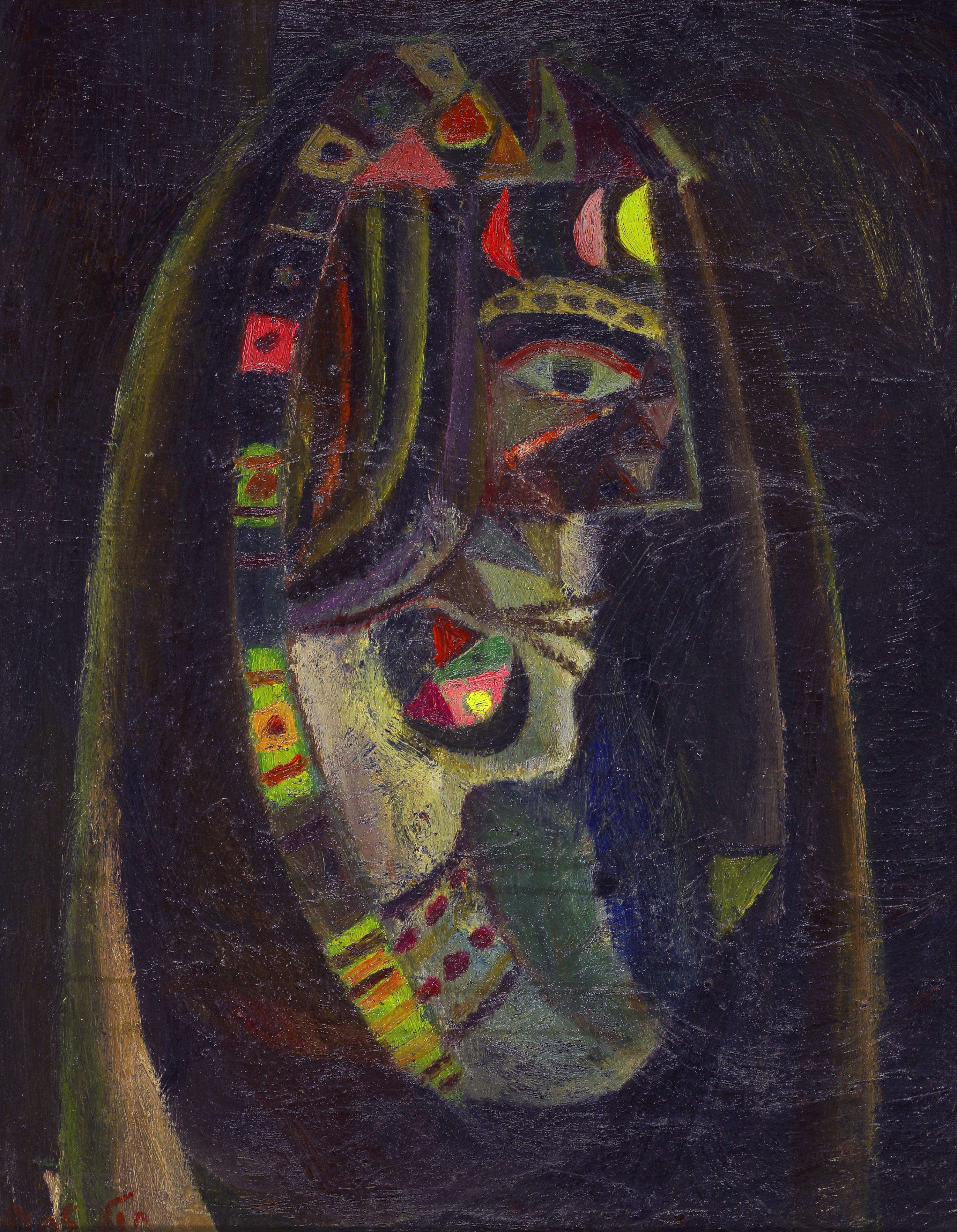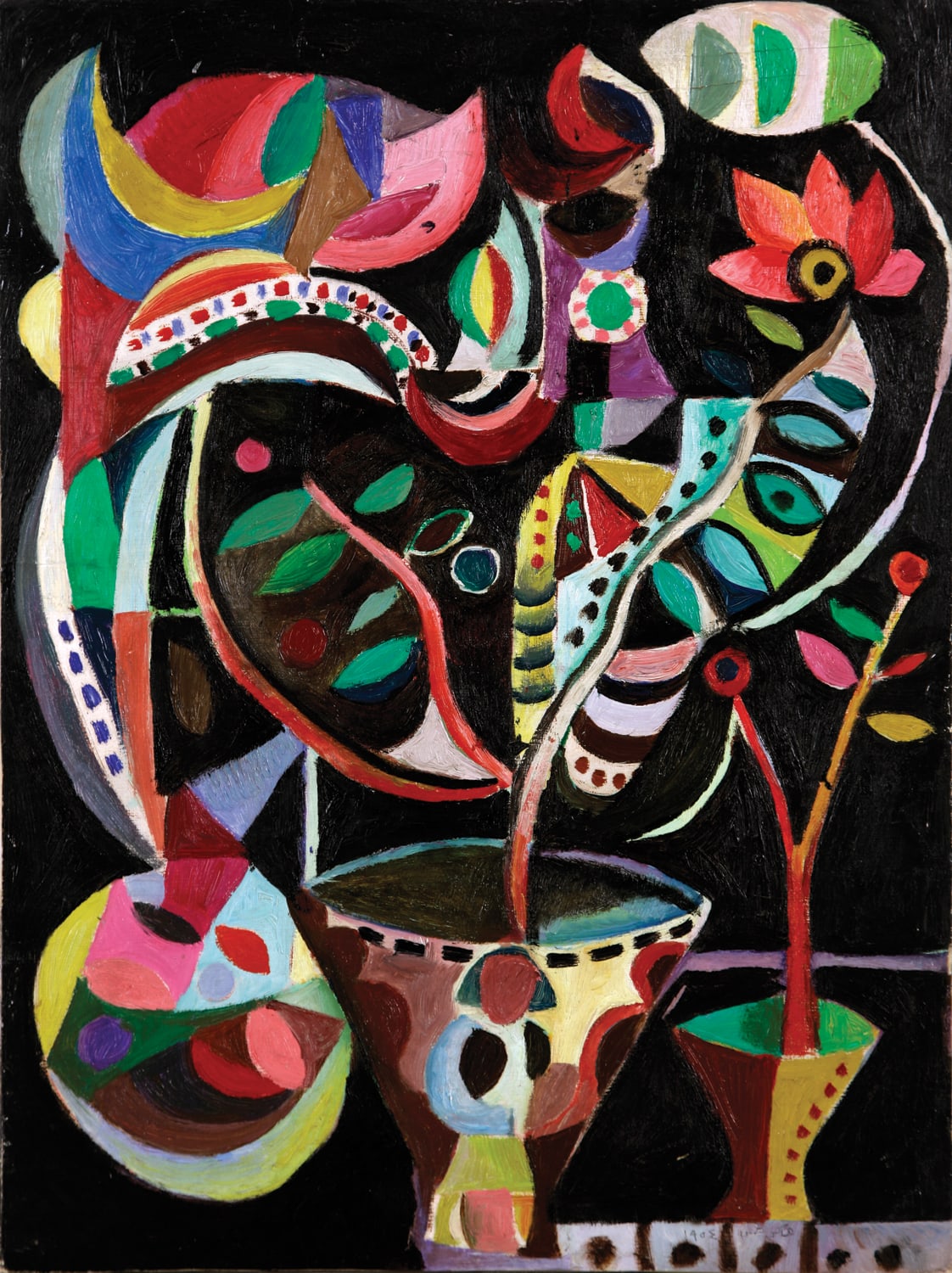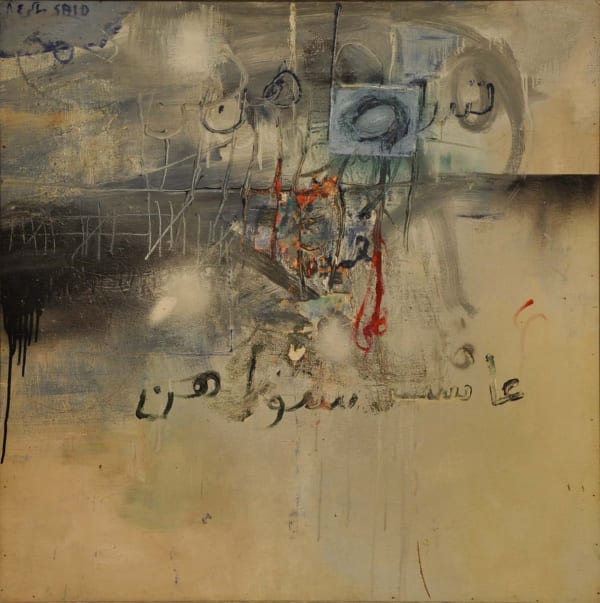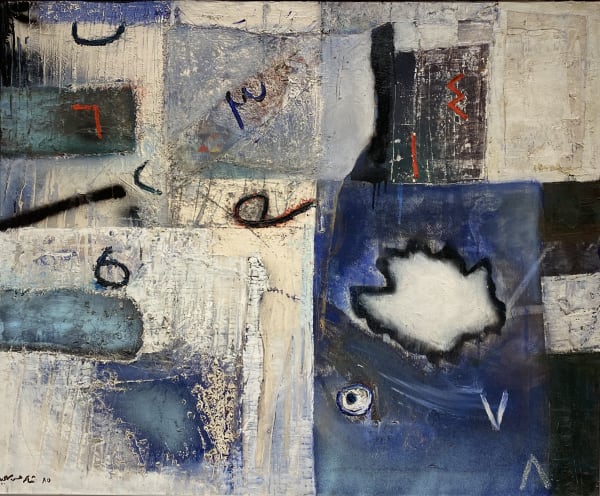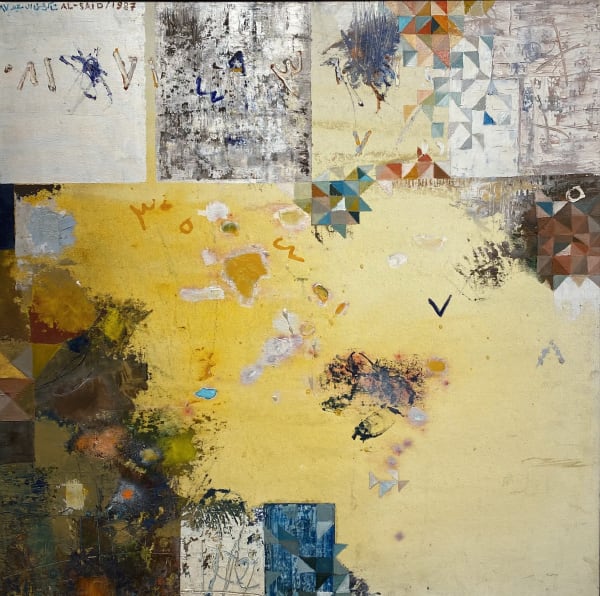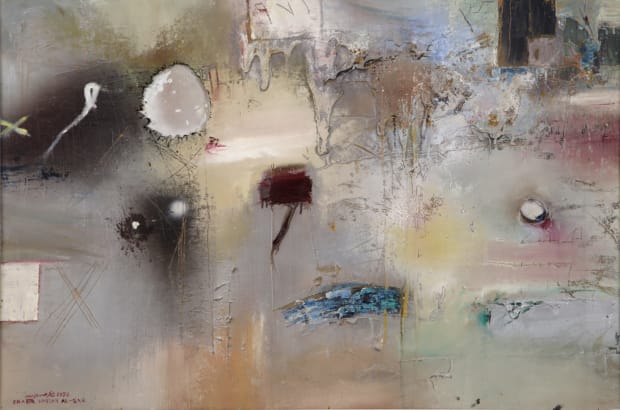-
Meem Gallery presents Shakir Hassan Al Said’s innovative career through an extensive collection of extraordinary works from the early 1950s through to the late 1990s.
A painter, sculptor, art historian, philosopher, teacher, writer and art critic, Al Said is not only considered to be one of the fathers of modern Iraqi art but as one of the Arab world's most influential and groundbreaking artists of the last century. Deeply involved in the creation of two of the most important art groups which steered the direction of post-colonial art in Iraq and united the concepts of heritage with modernity, many of Al Said's theories outlined a new Arabic art aesthetic, presenting regional art as uniquely Arabic, rather than through the prism of the West.
-
-
Included are two rare, early oil paintings from the 1950's.
Villager (1950) and Untitled (1954), made before the artist moved to Paris where he studied at Académie Julien, École des Arts Décoratifs, and the École Supérieure des Beaux-Arts (1955-59), which exemplify Al Said's work from the late 1940s and early 1950s. Despite displaying a certain affinity with Western art movements such as cubism and expressionism, the artist's work from this period is primarily characterised by local traditions, with the use of the bright colours and loose geometric lines found in tribal carpets, as well as depictions of rustic scenes and characters drawn from rural life in Iraq, as can be observed in the stylised portrait of The Villager.
-

VILLAGER
OIL ON board
1950 -

Untitled
Oil on paper
1954
-
Examining Shakir Hassan Al Said’s innovative career through an extensive collection of fifteen extraordinary works dating from the early 1950s through to the late 1990s, this exhibition reveals the various phases and tremendous scope of the artist’s prolific practice throughout his lifetime.
Al Said developed a revolutionary approach which explored the esoteric relationship of the body and spirit, drawing parallels with the reciprocal relationship between the visual and the non-visual, the symbiosis between space and time. The artist’s utilisation of the Arabic letter was not simply limited to its form or ideography, rather, he saw the letter as an intrinsic component of his vision of the ‘aesthetics of the trace’, put simply, the erosion of life and the patina left by the movement of time.
Al Said’s existentialist approach can be observed in his celebrated Walls series which was, in part, inspired by the work of Catalan artist, Antoni Tàpies. Resembling the graffiti scrawled on the walls of buildings, the paintings appear spontaneous, clandestine, anonymous and often illegible, as if not intend to be read; the inscriptions in the earth toned compositions set against the rough cracks and crevices of his textured wall paintings evoke the furtive nature of an act performed under repressive conditions, hinting at the censorship that the writing sought to evade.
-
- On his return to Baghdad, Al Said embraced the teachings and practices of Sufism and gradually abandoned figurative expression, turning his focus to compositions made up of Arabic letters - a very important element in the Sufi tradition. By 1971, he had formed the One Dimension Group, an artist collective that was primarily concerned with the exploration of Sufi traditions through abstract art. It was through the group that the artist further developed his theoretical approach, with the Arabic letter becoming an established element in modern regional art, a movement often referred to as al-hurufiyyah al-'arabiyyah (Arabic letterism).
-
-
Biography
Shakir Hassan Al Said (1925-2004) graduated with a degree in social science from the Higher Institute of Teachers, Baghdad, in 1948, and later received a diploma in painting from the Institute of Fine Arts, Baghdad, in 1954. At the Institute he was taught by Jewad Selim with whom he co-founded the Baghdad Modern Art Group, in 1951. From 1955 to 1959, after receiving state sponsored scholarships, Al Said travelled to Paris where he studied at the Académie Julien, École des Arts Décoratifs, and the École Supérieure des Beaux-Arts. On his return to Baghdad, he taught art history at the Institute of Fine Arts, from 1970 to 1980, and was the chair of the Department of Aesthetic Studies at the Ministry of Culture and Information from 1980 to 1983. He formed the One Dimension group in 1971, a collective that was primarily concerned with thee xploration of the Arabic letter.
-

